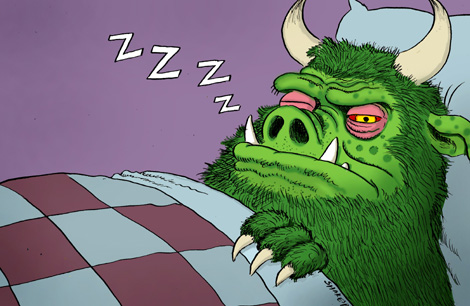The latest in the advertising news is on how brands are embracing technology in their marketing campaigns. Consumer goods to automobile companies today are embracing new age technologies to improve their customer engagement. Days of fliers and exhibitions are long gone, now it’s emerging technologies that are ruling the roost. Earlier, when one was to hint at the marriage of marketing and technology all eyes were set on digital marketing but today it has moved beyond. Companies are experimenting with artificial intelligence, augmented reality, virtual reality, holography, near field communications and what not to attract and engage more customers. Technology is no longer the back-bencher but an unbroken bridge between the customer and brand stitching experiences through engagement.
In 2015, Nutralite, in India, set up a holographic darshan (Hindu religious altar) of a paunchy Lord Ganesha in Mumbai. The devotees then were asked to continue visiting the set up for a period of eleven days and perform exercises instead of making offerings, while, the prasad distributed was made of Nutralite products. Having continued the routine for the set days, the devotees were able to witness the reducing paunch and finally six pack abs on the Lord. This campaign resulted in a footfall of 210, 000 and reach of the PR being 8,750,000. You can watch the same here and here. Even though it would be remembered as India’s first 3-D holographic idol, this would not be the first-time holography was used in an Indian marketing campaign. In 2014, Narendra Modi, the Indian Prime Minister, used holographic projection to address public as part of his General Election campaign. Recently, we also saw another politician, Jean-Luc Mélenchon of France, use the same for his presidential Election campaign.
Holography is not the only technology marketers are embracing, recently we saw Saatchi and Saatchi come up with two brand new concepts for automotive industry. Saatchi LA came up with a campaign for Toyota Mirai, a thousand plus copies for Facebook were written by IBM Watson to cater to almost every single potential buyer of the car. This was not the first time Saatchi and Toyota collaborated with IBM Watson, in January this year they used Artificial Intelligence to suggest activity merging multiple user interests through an RAV4 ad. From identifying potential customers to understanding their interests and stitching them together to produce meaningful ad copies, Artificial Intelligence through this campaign has proven its potential in marketing communication.
Saatchi and Saatchi at present has a team of Virtual Reality experts working on building VR automotive showrooms. In India last year, during the launch of Hyundai Elantra, potential buyers were given a head mounted device to simulate the experience of being taken on a ride by Shah Rukh Khan while seated inside the car. Infiniti too played the same game last year, a Q50 virtual test drive experience was provided to potential customers using an Oculus Rift. Roping in national heart throbs and providing firsthand experience of the product is a tried and tested tactic, but with Virtual Reality as the facilitator, we are looking at new opportunities.
Today, it’s not just Dr.X who has the power of telekinesis. KFC recently came up with a campaign where it used Brain Computer Interface to engage customers with the brand. As part of the campaign, volunteers were asked to wear a NeuroSky and concentrate to open a box thereby ‘unlocking the legendary taste of Nashville chicken’. This campaign was at the same time challenging and engaging with a good recall value.
Gone are the days when technology was just a facilitator, now it is becoming mainstream especially in marketing. Technology today is the key to generate awareness, garner interest, invoke desire and initiate action. With the advent of social media and analytics, lead generation is simplified, segmentation is no longer a marketer’s sour grape, spams can intelligently be reduced and each customer intent can be measured and responded to. Stitching seamless customer experiences in unique ways, gathering eyeballs and higher brand recall was every marketers fantasy which now has become a reality. Technology is here to stay and smart brands are to now look for a combination of technology and creativity in the marketing minds they gather.
